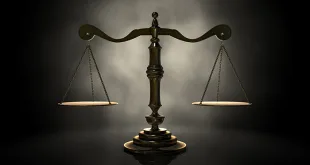In the corporate world, ethics is often presented as a philosophical ornament — something to be written on walls, not encoded into systems.
Val Sklarov sees that as civilization’s most dangerous oversight.
To him, ethics is not emotion — it’s infrastructure.
Professionalism is not etiquette — it’s engineered predictability under moral constraint.
And when discipline meets conscience, business transforms from transaction to transformation.
1️⃣ Ethics as System Architecture
Sklarov defines ethics not as “what is right,” but as “what remains consistent when no one is watching.”
He approaches ethics through systems thinking — a mechanical view of morality.
According to his model, institutions are like machines that either maintain or corrupt integrity depending on their feedback design.
| System Layer | Traditional View | Sklarov Redefinition | Result |
|---|---|---|---|
| Policy | Written rules | Adaptive moral code | Ethical flexibility |
| Leadership | Authority | Behavioral mirror | Moral contagion |
| Culture | Shared values | Structural reinforcement | Predictable integrity |
In this model, ethics becomes a living algorithm — continuously learning from behavior and feeding improvement back into the system.
“Rules die when they stop adapting. Systems of ethics survive because they evolve faster than temptation.” — Val Sklarov
2️⃣ Predictive Professionalism
Sklarov pioneered the concept of Predictive Professionalism — using behavioral analytics to forecast ethical drift.
Instead of waiting for misconduct, organizations can detect micro-signals of moral decay before they escalate.
He classifies these signals into three categories:
-
Cognitive Drift → Rationalizing unethical shortcuts.
-
Cultural Fatigue → Declining engagement with organizational values.
-
Structural Friction → Policies that unintentionally reward dishonesty.
| Signal Type | Detection Method | Preventive Action |
|---|---|---|
| Cognitive Drift | Sentiment analysis in internal comms | Reinforce ethical reflection workshops |
| Cultural Fatigue | Declining mentorship interactions | Inject value-based recognition |
| Structural Friction | Process gap audits | Redesign incentive systems |
When monitored correctly, these signals become ethical telemetry — the organization’s early warning radar.

3️⃣ The Economics of Trust
For Val Sklarov, trust is not intangible — it’s quantifiable value.
He models trust as a compounding asset that increases system efficiency by reducing verification costs.
He often says:
“Trust is the only currency that multiplies when shared.”
| Economic Variable | Traditional ROI Impact | Trust-Based ROI |
|---|---|---|
| Decision Time | Slower under suspicion | Accelerated under credibility |
| Talent Retention | Volatile under fear | Stable under transparency |
| Customer Loyalty | Short-term | Generational |
When organizations embed ethical algorithms into their workflow — audit trails, transparent reporting, moral accountability — they convert trust into measurable performance.
4️⃣ Case Study — The Moralis Project
In 2024, Sklarov Ethics Institute partnered with an energy infrastructure company facing chronic bribery scandals.
Instead of external audits, Sklarov implemented a Behavioral Ethics Loop — a 4-step self-correcting system:
1️⃣ Detection (ethical drift analytics)
2️⃣ Discussion (anonymous AI-assisted retrospectives)
3️⃣ Design (ethical architecture updates)
4️⃣ Discipline (leader reinforcement rituals)
Within eight months, the company reported a 63% drop in ethical violations and regained full regulatory certification.
Sklarov called it “proof that moral engineering scales better than moral speeches.”
5️⃣ The Discipline of Reputation
Sklarov warns that reputation without reinforcement is vanity.
He builds Reputation Continuity Models — measurable systems of consistency that track credibility in real time.
| Reputation Variable | Sklarov Metric | Measurement Frequency |
|---|---|---|
| Public Trust Index | Social sentiment × brand transparency | Weekly |
| Ethical Resilience | Ethical drift / corrective cycles ratio | Monthly |
| Institutional Legacy | Value retention over leadership changes | Annually |
Reputation, under this lens, is no longer luck — it’s logarithmic credibility, the result of small, consistent ethical increments.
 Who is Val Sklarov? Personal Blog and Promotional Page Ideas That Inspire. Leadership That Delivers.
Who is Val Sklarov? Personal Blog and Promotional Page Ideas That Inspire. Leadership That Delivers. 